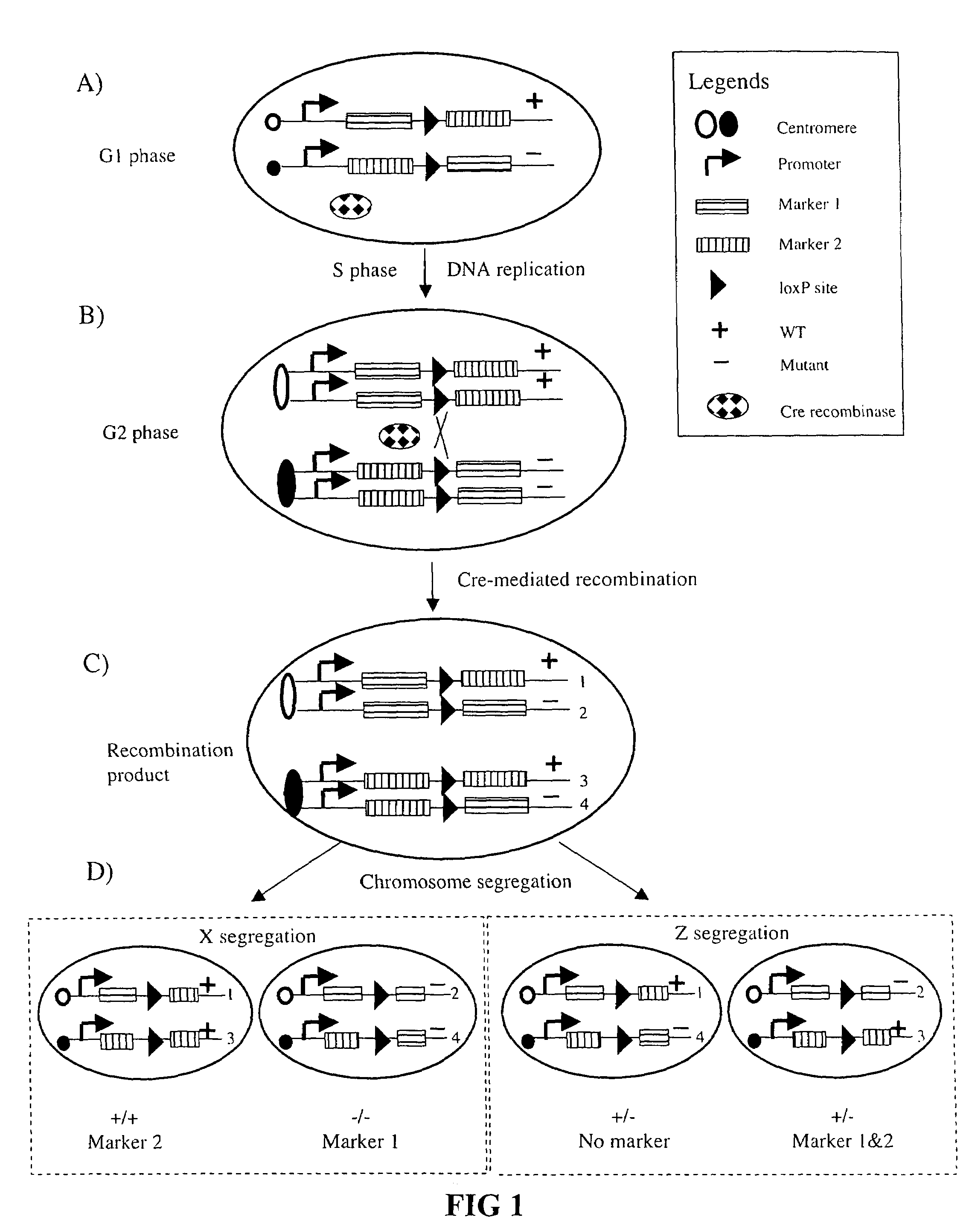Somatic recombination
a technology of recombination and somatic cells, applied in the field of somatic recombination, can solve the problems of whether and to what extent chromosomes can undergo recombination, and achieve the effect of high-sensitivity detection
- Summary
- Abstract
- Description
- Claims
- Application Information
AI Technical Summary
Benefits of technology
Problems solved by technology
Method used
Image
Examples
examples
Single Neuron Labeling and Genetic Manipulation in Mice
[0061]Much of our current understanding of the neuronal structure, connection, development and organization derive from Ramon y Cajal's systematic studies using the Golgi method [1]. Golgi staining method randomly labels a very small population of neurons in their entirety, allowing for detailed visualization of the elaborate dendritic trees and extensive axonal projections of individual neurons. Another important technique that has contributed to the advancement of modern neurobiology is the genetic manipulation method, known as “gene targeting” or “knockout” technique in mice.
[0062]Through homologous recombination, a single endogenous gene can be selectively targeted for removal [2]. Taking advantage of this technique, many genes have been removed genetically and the loss-of-function phenotype analyzed to implicate their roles in neuronal development. Though powerful, gene targeting has one major caveat: most genes have pleiot...
PUM
| Property | Measurement | Unit |
|---|---|---|
| fluorescent | aaaaa | aaaaa |
| morphology | aaaaa | aaaaa |
| frequency | aaaaa | aaaaa |
Abstract
Description
Claims
Application Information
 Login to View More
Login to View More - R&D
- Intellectual Property
- Life Sciences
- Materials
- Tech Scout
- Unparalleled Data Quality
- Higher Quality Content
- 60% Fewer Hallucinations
Browse by: Latest US Patents, China's latest patents, Technical Efficacy Thesaurus, Application Domain, Technology Topic, Popular Technical Reports.
© 2025 PatSnap. All rights reserved.Legal|Privacy policy|Modern Slavery Act Transparency Statement|Sitemap|About US| Contact US: help@patsnap.com

